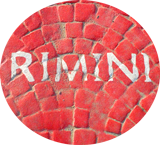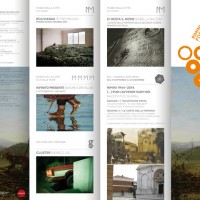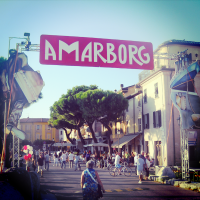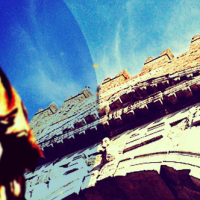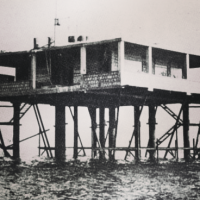Verucchio
Heading up to the picturesque town of Verucchio, just 16km outside Rimini in the Val Marecchia, gives you a chance to take in two very different views. The first, on arrival, is a spectacular panorama – described by many as the most beautiful in all Emilia-Romagna.The town’s name, according to one theory, comes from the term vero occhio or real eye, because of the view it affords sweeping to the south-easterly point of Gabbice, through to Rimini and the surrounding Val Marecchia.
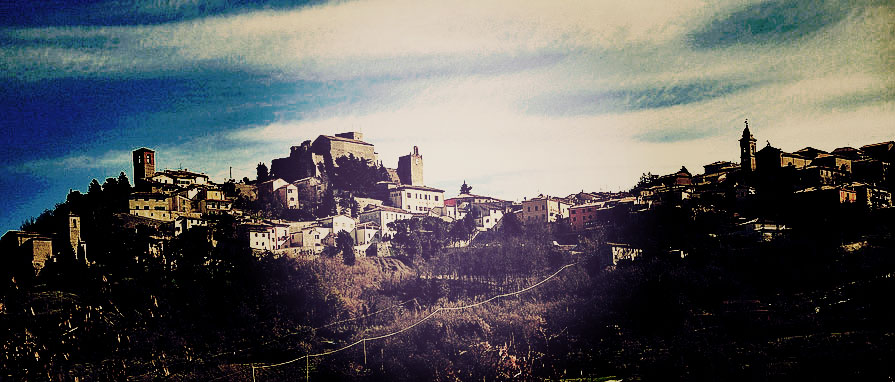
The second view is a temporal one, as rather than gazing across the landscape down towards the sea, you gaze from modernity through to the middle ages and back to the Iron Age settlements of the so-called Villanovan culture. Indeed there are historians that contest the name Villanovan, derived from remains found in Villanova, in the 1850s, just outside Bologna suggesting that it should insetad by Verucchian as a number of important archaeological finds from the 1890s onwards support the theory of this hill-town as one of the most important settlements of this period (between the 12th and 10th century B.C.).
Today’s town of Verucchio has a population of about 9,500. It’s a vibrant small town that plays an important part in the preservation of the region’s culture with various important festivals throughout the year ranging from the important International Music festival held every summer through to La Fira de Bagoin, an annual feast, in january, of romagnolo cooking where the humble pig becomes king for the duration.
The History of Verucchio
Verucchio, because of its elevation (322mt) and position in the Marecchia river valley, which from the iron age through to the classical period would have been much larger and navigable (it was described, in the area around Verucchio, as the ‘little sea’), was an ideal place for settlement. So much so that it became an important stop on trading routes like the Amber road that connected Northern Europe, Greece, and the Orient. Burial tombs uncovered in the area have given archaelogists important information on pre-historic trading routes, with,the discovery of jewelry made of Baltic Amber for example.
The town has signicant Etruscan roots (ruins of typically Etruscan homes have been found), and a name that may in part derive from the Umbro word Verruca (high place) all of which helps back the town’s claim to being one of the oldest towns in Italy.
With Roman expansion into the Po river plain, and the growth of Ariminum, Verucchio too became absorbed into the nascent Empire, retaining its role as an important staging post.
During the barbaric invasions Verucchio along with a number of other towns in this, the rump of the po valley, held out against the Longobards, remaining a part of the Roman Empire – leading to the origin of the region’s name Romagna, or land of the Romans. It was a losing battle, though, as the Empire disintegrated. And so followed a period where Verucchio’s fortunes dwindled, largely until the arrival of the Malatestas in the 1150s.
Verucchio, the cradle of the Malatestas
Verucchio was passed back and forth between a number of authorities, from Emporor Otto I to Ulderico of Carpegna for example, through to the Church which in 1150 passed it over to the authority of the Malatesta family of Pennabilli. Verucchio is often known, in fact, as the cradle of the Malatesta Seigniory which dominated Rimini and the Romagna during the middle ages. It was in Verucchio in 1212 that Malatesta da Verucchio, famously described by Dante in his inferno as the ‘old mastiff’, was born, the most significant figure for the birth of the Malatesta powerbase. He became a famous condottiero, or type of mercenary,and during the Ghibelline and Guelph conflict that raged throughout Italy in this period managed to amass huge wealth and power through warfare and diplomacy. He became master of Rimini in 1295, for example, when he murdered the then ruling family, the Parciti.
While Malatesta power shifted to Rimini, Verucchio remained an important strategic post commanding the Val Marecchia, and was fought over continuosly by warring powers, passing between Montefeltro, The Borgias, The Republic of Venice, and the Papacy, and finally into the Kingdom of Italy in 1860.
What to See in Verucchio
The Rocca Malatestiana Fortress
Also known as the Rocca del Sasso as it’s built on a large rock (sasso), this is one of the best preserved castles of the region – and there are a huge amount of castles in this region, given that it was so strategically important. The first mention of a castle here was in the donation by Emporor Otto I to Ulderico di Carpegna in 962. The foundations of the modern-day castle, however, were built in the 12th century by the Malatestas. It was re-inforced and restructured in 1449 by Sigismondo Pandolfo Malatesta, though it did him little good as he was tricked out of the castle in one of the most famous episodes in the bitter struggle between Malatesta and Federico da Montefeltro, the lord of Urbino. In 1462 while beseiging Verucchio Montefeltro sent a forgery to suggesting that troops loyal to Sigismondo were arriving from Malatesta Novello. When the fortress opened its gates it was greeted not by Malatesta’s troops but by those of the cunning Montefeltro. In the same year Montefeltro defeated Malatesta in a decisive battle on the banks of the river Cesano near Senigalia in the modern-day region of the Marche, effectively ending Malatesta power in the region.
The impressive fortress is open to the public. YOu can visit the main hall, the secret passages, guard rooms and see the XIII century cistern (28m2) which still functions today. Amongst the best reasons to visit this magnificent castle is the climb up the towers which afford the best view in the whole town of the surrounding countryside. Truly spectacular.
The Rocca Malatestiana in Verucchio – the Malatesta Fortress
The Rocca Malatestiana in Verucchio also hosts various concerts including the world-famous Verucchio International festival each summer.
The Municipal Archaeological Museum
Housed in a former Austin Friary, Verucchio’s municipal Archaeological museum is well worth a visti, even if many of the important finds that were discovered in the Iron age era tombs surrounding the town have been moved to museums in Bologna and Rimini. On display is an impressive collection of treasures found in tombs like the one that has been dubbed ‘the tomb of the princess’ due to the richness of the objects found there. The collection contains fabrics, helmets, ceramics and jewelry found and gives a good insight into proto-historic Italy.
Piazza Malatesta
The centre of the old town of Verucchio, surrounded by elegant 18th and 19th century buildings including the town hall, the Palazzo Ripa, where you can see a number of paintings on display from the 18th Century Carlo Cignani school.
Passarelo and the Benedictine Convent
Passing up Via Marconi you’ll come to the Passarelo gate and the Benedictine Convent of the Clarisse. Passarelo, which faces the Rocca Malatestina, was originally a second fortress in the town, and was used by the Malatesta for ceremonial purposes while the Rocca served primarily for military defence. The old fortress of Passarelo is long-ruined, with the convent built on its ruins in the 17th century.
The whole town of Verucchio has been awarded the orange flag (bandiera arancione), the prestigious award from the Touring Club of Italy given out to Italy’s most beautiful towns where a standard of excellence has been achieved in the area of tourism.
How to get to Verucchio from Rimini
By Public Transport
Some of the buses on the local route #160 from Rimini to Novafeltria stop in Verucchio’s Piazza Malatesta. Check before boarding, as many stop only at Ponte Verucchio.
By Car
Head out of Rimini on the Via Maracchiese / SP258. Just outside of Villa Verucchio take the third exit from the roundabout to head on the Via Provinciale Nord / SP15bis towards Brocchi. Follow this road up to Verucchio.
